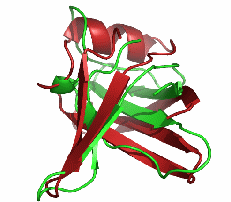“POEM@HOME”的版本间差异
(更新WUProp内存数据) |
(项目介绍翻译) |
||
| 第15行: | 第15行: | ||
| website =http://boinc.fzk.de/poem/ | | website =http://boinc.fzk.de/poem/ | ||
}} | }} | ||
| − | [[POEM@HOME]] | + | [[POEM@HOME]] 实现了一个理解蛋白质不同方面结构的重要的方法,并把它提供给世界性的分布式计算 . POEM@HOME背后的科学方法是让 C. B. 安芬森获得1972年诺贝尔化学奖的热动力学假说的计算实现. |
| − | POEM@ | + | POEM@HOME是一个致力于提高我们对生物分子结构和功能认识的纯学术,非盈利项目. 所有的结果都会发布在国际同行评审期刊上,并有对POEM@HOME 志愿者的适当注明. |
2010年6月23日 (三) 20:09的版本
|
POEM@HOME | |
|---|---|
POEM@HOME logo | |
无屏保图形 | |
| 开发者 | FZK-INT |
| 版本历史 | 2007年11月13日 |
| 运算平台 | |
| 项目平台 | BOINC |
| 程序情况 | POEM Protein Folding≈76.2MB |
| 任务情况 | |
| 项目状态 | 运行中/开放注册 |
| 项目类别 | 生命科学类 |
| 优化程序 | 无 |
| 计算特点 | CPU密集: |
| 官方网址 | POEM@HOME |
| [{{{rss}}} 通过 RSS 获取项目新闻] | |
POEM@HOME 实现了一个理解蛋白质不同方面结构的重要的方法,并把它提供给世界性的分布式计算 . POEM@HOME背后的科学方法是让 C. B. 安芬森获得1972年诺贝尔化学奖的热动力学假说的计算实现.
POEM@HOME是一个致力于提高我们对生物分子结构和功能认识的纯学术,非盈利项目. 所有的结果都会发布在国际同行评审期刊上,并有对POEM@HOME 志愿者的适当注明.
如何加入项目
该项目基于 BOINC 平台,简要的加入步骤如下(已完成的步骤可直接跳过):
- 下载并安装 BOINC 的客户端软件(官方下载页面或程序下载)
- 点击客户端简易视图下的“Add Project”按钮,或高级视图下菜单中的“工具->加入项目”,将显示向导对话框
- 点击下一步后在项目列表中找到并单击选中 POEM@HOME 项目(如未显示该项目,则在编辑框中输入项目网址:http://boinc.fzk.de/poem/ ),然后点击下一步
- 输入您可用的电子邮件地址,并设置您在该项目的登录密码(并非您的电子邮件密码)
- 再次点击下一步,如项目服务器工作正常(并且有适合自身操作系统的计算程序),即已成功加入项目
更详细的加入方法说明,请访问 BOINC 新手指南 或 BOINC 使用教程。
本站推荐您加入 Team China 团队,请访问项目官方网站的 团队检索页面,搜索(Search)并进入 Team China 的团队页面,点击页面中的 Join 并输入用户登录信息即可加入!
Project Detail
Proteins are the nanoscale machinery of all the known cellular life. Amazingly, these large biomolecules with up to 100,000 atoms fold into unique three-dimensional shapes in which they function. These functions include all cellular chemistry (metabolism), energy conversion (photosynthesis) and transport (oxygen transport), signal processing in the brain (neurons), immune response and many others, often with an efficiency unmatched by any man-made process. Protein malfunction is often related to diseases and thousands disease-related proteins have been identified to date, many with still unknown structure. To understand, control or even design proteins we need to study protein structure, which is experimentally much harder to obtain than the information about the chemical composition (sequence) of a specific protein.
By joining this project you will contribute to a computational approach to
- predict the biologically active structure of proteins
- understand the signal-processing mechanisms when the proteins interact with one another
- understand diseases related to protein malfunction or aggregation
- develop new drugs on the basis of the three-dimensions structure of biologically important proteins.
POEM@HOME implements a novel approach to understand these aspects of protein structure, which lends itself very well to worldwide distributed computing. The scientific approach behind POEM@HOME is a computational realization of the thermodynamic hypothesis that won C. B. Anfinsen the Nobel Prize in Chemistry in 1972.
So please help us, by joining POEM@HOME, solve the scientific mysteries described above and decipher the biological information encoded in proteins of unknown structure.
POEM@HOME is a purely academic, non-profit project to improve our understanding of biomolecular structure and function. All substantial result of POEM@HOME will be published in international peer reviewed journals with proper credit to the POEM@HOME volunteers.
相关链接
